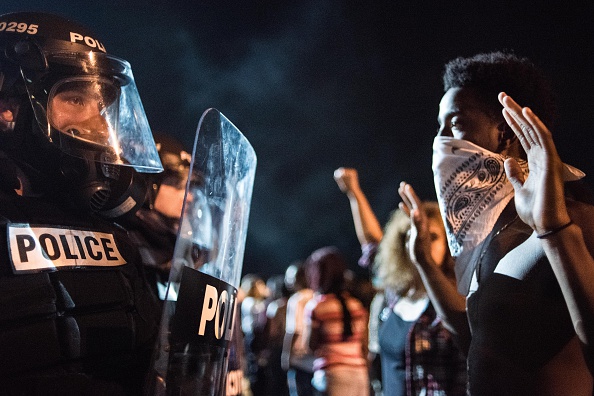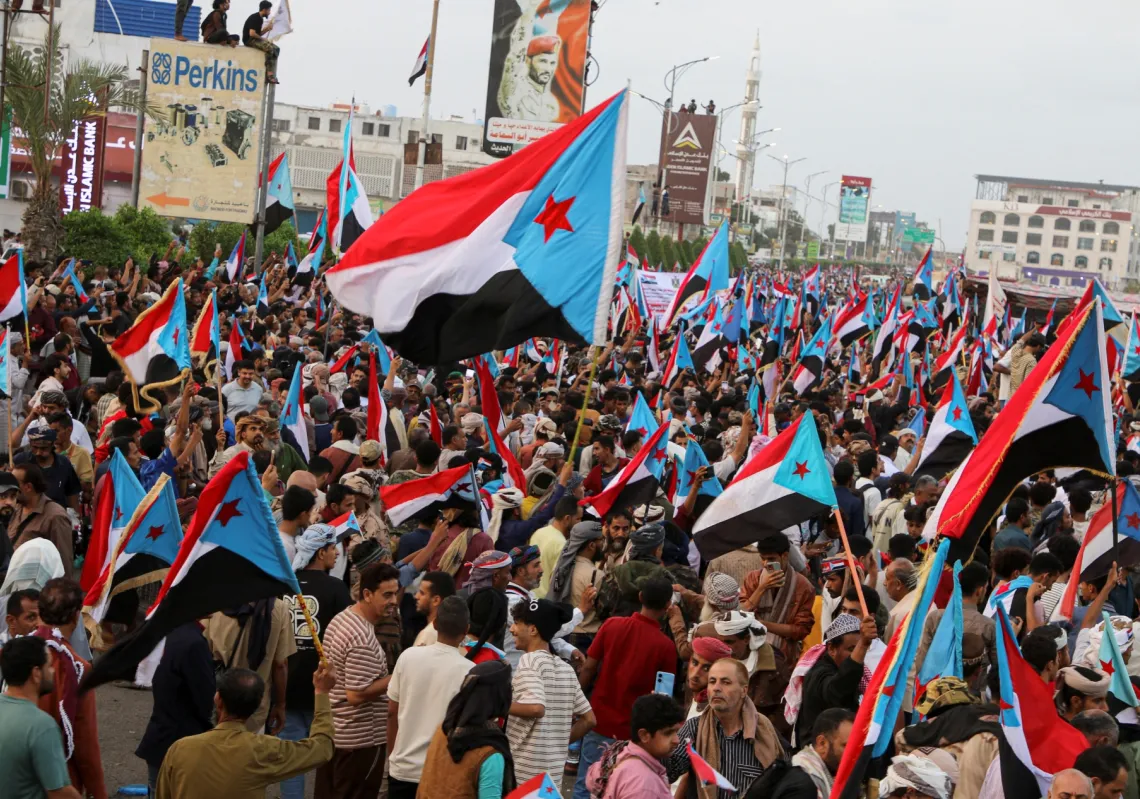Today the demand to demilitarize the U.S. police is widespread. Last month, Rand Paul, the Republican senator from Kentucky, and Senator Brian Schatz, Democrat of Hawaii called to end the 1033 Program, by which police have been able to secure billions of dollars’ worth of military equipment. And while the outcry may have grown louder, the concern it expresses is hardly new. In 2014, citizens of Concord, New Hampshire, learned that the city’s police department was going to receive new military equipment, including a tank. Protesters descended upon the town hall with signs reading, “More Mayberry, Less Fallujah!”
Efforts at demilitarization are bound to fall short, however, if they do not take into account the hidden history that has produced such martial tactics in the streets to begin with. From its very inception, modern policing has been militarized, readily equating citizens with enemies and even with colonized subjects. Modern policing is tethered inextricably to overseas colonial projects of conquest, occupation, and rule. Demilitarizing its practice will require uprooting a worldview with which it is entirely entwined.
FROM THE PHILIPPINES TO BERKELEY
The early twentieth century was called “the reform era” in U.S. policing. But the changes of that time actually brought police into greater conformity with the military. During the reform era, police departments began using the same .38 Special pistol that the U.S. Army used, and they adopted new methods, such as one called “pin mapping,” which involved charting the locations of crimes in order to detect hot spots of criminal activity, predict future crime, and deploy forces accordingly.
August Vollmer, who would become known as “the father of modern policing,” was the head of the police department in Berkeley, California, in 1909 and an early adopter of pin mapping. The technique quickly spread across police departments all over the country. Today it is so common that we hardly think of it as innovative. At the time, however, it was a radical invention, as police had never attempted to track or predict crime. Vollmer adopted the technique from his days in the U.S. Army during the Philippine-American War. That conflict, which raged from 1899 to 1902, cost some 200,000 Filipino civilian lives and made the Philippines an American possession. The U.S. Armyused pin mapping to track the movements of insurgents and locate their camps in the vast terrain of Central Luzon. Vollmer used pin-mapping information to penetrate the Philippines’ interior and hunt down rebel forces. Later, as a civilian police officer, he simply applied the tactic to policing. He referred to it as “the art of making war on the map.”
Vollmer introduced other innovations to policing. When he was elected town marshal of Berkeley in 1905, Vollmer put his entire force on bicycles. This move earned him some laughs from the press and other officials, but it provided his force with new mobility. Mounted police units could cover more terrain at heightened speeds than foot patrols. Then, in the early 1920s, Vollmer created a mounted unit in the Los Angeles Police Department using automobiles, and police departments all across the country followed suit. Soon enough, mobile patrols were seen nearly everywhere in U.S.cities, speeding down streets to chase criminals or swarm hot spots.
Vollmer took the idea for mobile units, too, from the U.S. campaign in the Philippines. To counter stealthy, fast-moving Filipino insurgents, the U.S. Army dropped its conventional formations, whereby soldiers lined up and marched across the battlefield, and replaced them with open-order tactics, relying upon small, elite mobile units, which, using pin-mapping knowledge, could hunt insurgents and attack their compounds—a precursor to present-day search-and-destroy operations. Vollmer had served in one of those elite mobile forces, and when he created his mobile police units, he adopted the very same approach. “We must be able to move men rapidly from one scene of action to another,” he explained to his force before one of his famous raids. “Concentration of force is supremely important in military science, and it will be important to the task we have at hand.”
Vollmer introduced many other methods to the police that were inspired by his experience in the Philippines. He created new police intelligence departments modeled after the army’s intelligence field units. He inaugurated some of the first police training academies in the United States, inspired by the military’s new Army War College. But early police militarization was not the brainchild of Vollmer alone. In 1912, James Robinson became the chief of police of Philadelphia. He, too, was a veteran who militarized his force, creating a police academy and mounted units, training his forces using military drills, and writing a manual for patrolmen akin to the army’s manual for soldiers. In the 1920s, Smedley Butler militarized Philadelphia’s police force, creating a new police uniform inspired by the Marine Corps, installing military-style checkpoints, and conducting hundreds of raids with his armed mobile units. Butler had served in the Spanish-American War, Puerto Rico, the Philippines, Honduras, Haiti, Nicaragua, and Veracruz.
Less renowned figures than Vollmer or Butler also imported methods from colonial conquests. In the first decade of the twentieth century, government reports revealed that unnamed police in some Midwestern cities had been using a horrific interrogation technique on detainees known as “the water cure.” This was an early variant of waterboarding, a form of torture that the U.S. Army famously used during the Iraq war to extract information from suspects. The water cure that the police used in the early twentieth century originated in the Philippines, where the U.S. Army had used it on prisoners to obtain information on the whereabouts of enemy camps.

DOMESTIC COUNTERINSURGENCY
The Martinican critic Aimé Césaire once described Adolf Hitler’s regime as a form of imperial feedback called “the boomerang effect,” whereby the racist violence and military force Europe had used to rule colonial Asia and Africa began to be used at home. The adoption of colonialist methods by police forces in the United States can be thought of similarly. The tactics devised by the U.S. Army in the Philippines were expressly meant for targeting and monitoring Filipino insurgents, whom soldiers thought of as racially inferior, intrinsically violent, and criminal. Under the army’s logic, keeping the racially inferior in line required new military tactics such as pin mapping and mounted units. By using those methods on minorities at home, reformers inscribed the same colonial mindset on race into the very core of policing.
Imperial feedback in the United States was driven by the belief that the techniques developed abroad to conquer the dangerous “inferior races” were perfectly appropriate for use on similarly criminal “inferior races” at home. Vollmer, for example, had been elected as Berkeley’s police chief because leading citizens worried that Chinese gangsters were bringing prostitution, opium use, and gambling dens to town. Because Vollmer had fought the Filipino guerrillas, his supporters argued, he would be the best man to get rid of Chinese rogues. Fittingly, his very first campaigns in Berkeleyincluded raids on Chinese gambling houses and arrests of foreigners at higher rates than native-born residents. Similarly, after James Robinson militarized the Philadelphia police force, he began arresting African Americans and raiding their communities at disproportionate rates.
Policing consequently became a form of domestic counterinsurgency. Pin mapping and mounted forces invited the police to imagine U.S. cities as zones of colonial conquest. In fact, when Vollmer told his forces that they needed to use “military science” for policing, he later said that the task at hand was war against “the enemies of society.” It is not surprising, then, that police officials and politicians first began speaking of policing in the early twentieth century as a “war on crime.”
THE ENEMY IS HERE
As the twentieth century wore on, the process of police militarization through imperial feedback proceeded unabated. As the historian Stuart Schrader shows in his groundbreaking book, Badges Without Borders, from the 1950s to the 1970s, American police often used the same counterinsurgency techniques and technologies that were used by U.S. and British counterinsurgency campaigns in Vietnam, Malaya, and Venezuela, such as “stop and frisk” and two-way radios and receivers. And in 1967, John Nelson, a veteran of the Vietnam War, helped create the United States’ first special weapons and tactics unit within the Los Angeles Police Department. Nelson came to the idea for SWAT units after comparing the ghetto riots of Watts, Detroit, and Newark with anticolonial insurgencies in Vietnam and British Africa and realizing that the force reconnaissance units of the army would be useful in repressing riots at home.
Such units were not the only legacy of the Vietnam War in U.S. policing. In the early 1970s, a Chicago police officer named Jon Burge reportedly led a group of other officers in torturing 100 African American criminal suspects using electroshock techniques. Burge, who was loosely affiliated with right-wing racist organizations, had previously served in Vietnam in the Ninth Infantry Division, where he likely learned how to use electroshock interrogation techniques on Vietcong suspects.
More recent U.S. entanglements in the Middle East and elsewhere have similarly come home to roost in the techniques and mentalities of police. The sociologist Sarah Brayne traces the military origins of the surveillance software and algorithms used in policing. In many U.S. cities, veterans of the Iraq and Afghanistan wars advise law enforcement on employing counterinsurgency techniques to police gangs. One such veteran, Kevin Kit Parker, noted that “gangs rely on the passive support of the population . . . the same way al Qaeda would go into Sudan.” Parker thus aimed to “work with the police to develop technologies, tactics, procedures, to use against gangs.”
That the police seem to see citizens, especially those who are black or brown, as potential enemies on occupied soil is no coincidence, given the profound relationship between warfare and policing in the United States. Police have adopted the methods and mindset of colonial counterinsurgency forces, including the belief that danger lurks behind each corner and in every passing face. History counsels caution to those who seek to demilitarize the police. The flow of military hardware is not the only problem. The United States needs not only to demilitarize policing but to decolonize it.
This article was originally published on ForeignAffairs.com.









